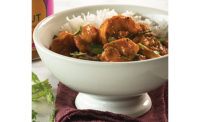Ethnic Flavors–Beyond Authenticity
“The global food flavors market is on a trajectory of steady growth, projected to increase at a compound annual growth rate (CAGR) of 3.5% from 2022 to 2027. Valued at $18 billion in 2022, the market is expected to reach $21.3 billion by 2027, driven by changing consumer lifestyles, technological advancements, and a shift toward natural and sustainable ingredients.” — MarketsandMarkets Research, Inc.
Trends in ethnic flavors and flavor fusion in new product development continue to grow and expand as we move deeper into the 2020s. We seem to be entering a period of culinary development when the flavors and culinary traditions from more countries and regions than ever before are making their way into America's culinary patois. This presents opportunities as well as challenges for the research chefs and R&D experts creating the next generation of foods and beverages with a pan-global appeal.
Among the most significant of these challenges is that of authenticity of flavors. Yet, contrary to popular belief, the need for rigid adherence to authentic flavors in so-called “ethnic cuisines” is not carved in stone. Prepared Foods interviewed the culinary power couple Hinnerk and Ming Qian Von Bargen to gain insight into the current ingredients and trends and global flavors and fusions of the different culinary traditions that can create a whole that is greater and tastier than the sum of its parts.
“It’s been a long development for many years…[consumers] become more and more adventurous, and seeking out authentic flavors,” acknowledges Hinnerk, a professor at the Culinary Institute of America, San Antonio. His wife, Ming, owner of three San Antonio restaurants, concurs. “We have many noodle dishes and rice dishes [in which we] honor the traditional Asian flavor,” Ming says, and we also offer a fresh and a modern take. Those dishes reflect the heart of Asian comfort food, while also catering to the global palate and bringing together the authenticity and the innovation.”
According to the Von Bargens, it’s important to understand that the ethnic flavor fusion trend is not just about taste. “It’s about cultural connection and kind of that that we share the traditional flavors,” they explain. “We like to tell a story and build bridges between communities.” As to the immediate future of global and ethnic flavors, they note that the goal is to “move into 2025, and deepen this continuing of enhancing culinary diversity and appreciation of the influences from all over the world—the rich food traditions.”

Ethnic Flavors–Beyond Authenticity
Interview with Professor Hinnerk Von Bargen of the Culinary Institute of America, San Antonio, and his wife, Ming Qian Von Bargen, owner of three San Antonio restaurants.
Listen to more from The Prepared Foods Podcast.
In order to inculcate this recognition into the next generation of research chefs to prepare for and meet the challenges of creating ethnic, traditional, and even fusions that will appeal to consumers across a broad demographic, professor Von Bargen presents some key guidance. “Never forget that that more than half your ideas go down the drain—you just don't know which half it is. You have to keep on innovating. Take existing ideas and build on them. The cuisine fusions or traditions that can springboard off of common flavors are what really make it in the world.”
He also notes that, “The key is to honor the essence of the culinary heritage, and not just worry about one specific way how to do it. [Authenticity] is more like a journey rather than a barrier to entry…it allows us to grow; it opens up opportunities for even more diverse flavors in the future to not be too stiff about authentic. It’s more about integrity than authenticity.”
In case you missed it, you can catch Hinnerk’s video interview and podcast on flavor fusions here.
Looking for a reprint of this article?
From high-res PDFs to custom plaques, order your copy today!






